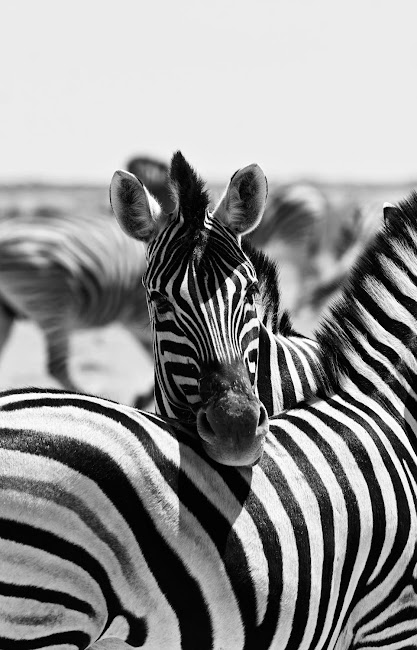Wildlife trafficking and the illegal wildlife trade are among the most pressing and urgent global environmental issues. This criminal activity not only threatens the survival of countless endangered species but also has profound implications on ecosystems, human health, and global security. In this article, we will delve into the devastating consequences of wildlife trafficking and discuss the efforts being made to combat this issue. We will also explore ways in which readers can contribute to stopping wildlife crime and preserving the planet's precious biodiversity.
The Scope and Scale of Wildlife Trafficking:
Wildlife trafficking is the illegal trade of animals and animal products, such as horns, tusks, and fur. It is a multi-billion dollar industry and is often linked to organized crime networks, making it the fourth largest illicit trade globally, following drugs, human trafficking, and counterfeiting. Despite international efforts to combat this illegal trade, the demand for wildlife and wildlife-derived products continues to rise.
The most targeted species include elephants, rhinoceroses, tigers, pangolins, and many more. The demand for these animals and their parts is driven by a variety of factors, including cultural beliefs, traditional medicine, and status symbols. The market for exotic pets and the desire for rare and unique species further exacerbates the problem.
The Devastating Consequences of Wildlife Trafficking:
1- Biodiversity Loss and Ecosystem Collapse
The illegal wildlife trade poses a significant threat to the world's biodiversity. As populations of targeted species decline, the ecosystems they inhabit are irreversibly altered, leading to a cascade of negative consequences. The loss of keystone species such as apex predators or large herbivores can destabilize food chains and lead to the extinction of other species that rely on them for survival.
For example, the decline of elephants, which are ecosystem engineers, can lead to overgrowth of forests and reduced habitat for other species. Similarly, the loss of top predators such as tigers can result in overpopulation of prey species and the depletion of vegetation, ultimately causing the collapse of ecosystems.
2- Human Health Risks
The illegal wildlife trade also poses a significant risk to human health. The trafficking of live animals, often in unsanitary and inhumane conditions, can lead to the spread of zoonotic diseases - illnesses that are transmitted from animals to humans. The COVID-19 pandemic, which is believed to have originated from a wildlife market in China, is a stark reminder of the potential consequences of wildlife trafficking on global public health.
3- Economic Impacts
Wildlife trafficking can also lead to significant economic losses, particularly in countries that rely on ecotourism as a major source of income. The depletion of wildlife populations can have a ripple effect on local communities that depend on tourism revenue for their livelihoods. Moreover, the costs associated with combating wildlife trafficking and addressing its consequences can be substantial.
4- Global Security Threats
Wildlife trafficking is often linked to transnational organized crime networks and, in some cases, terrorist organizations. The vast profits generated by the illegal wildlife trade can fuel corruption, undermine the rule of law, and destabilize governments. This illicit trade also exacerbates existing conflicts by providing a source of financing for armed groups.
Efforts to Combat Wildlife Trafficking:
1- International and National Legislation
One of the primary tools in the fight against wildlife trafficking is international and national legislation. The Convention on International Trade in Endangered Species of Wild Fauna and Flora (CITES) is a global agreement between governments to regulate and control the trade in wildlife to ensure its sustainability. Over 180 countries are party to CITES, which provides a framework for monitoring and regulating the trade in over 35,000 species of plants and animals.
In addition to international agreements, many countries have enacted national laws to combat wildlife trafficking. These laws often involve strict penalties for poachers, traffickers, and consumers of illegally sourced wildlife products.
2- Law Enforcement and Anti-Poaching Efforts
Effective enforcement of wildlife protection laws is crucial to combating wildlife trafficking. Governments, NGOs, and local communities around the world have ramped up efforts to crack down on illegal wildlife trade networks. This includes improving surveillance and intelligence gathering, strengthening border controls, and investing in anti-poaching units.
3- Demand Reduction and Public Awareness Campaigns
Reducing demand for illegally sourced wildlife products is essential to curbing the illegal wildlife trade. Public awareness campaigns, celebrity endorsements, and social media initiatives have been used to educate consumers about the devastating consequences of wildlife trafficking. These efforts aim to change cultural attitudes and reduce the demand for wildlife products, particularly in countries with high levels of consumption.
How You Can Help:
Individuals can play a vital role in the fight against wildlife trafficking. Here are some ways you can help:
1. Educate yourself and others about the consequences of wildlife trafficking and the importance of biodiversity conservation.
2. Avoid purchasing products made from endangered species or exotic pets sourced through the illegal wildlife trade.
3. Support organizations working to combat wildlife trafficking and conserve endangered species.
4. Advocate for stronger wildlife protection laws and policies in your country.
5. Report any suspected illegal wildlife trade activities to local authorities or wildlife protection organizations.
6. Use your voice on social media to raise awareness about the issue and encourage others to take action.
Conclusion:
Wildlife trafficking and the illegal wildlife trade are devastating global crises with far-reaching consequences. The loss of biodiversity, the potential for zoonotic disease outbreaks, economic impacts, and global security threats all underscore the urgent need for collaborative action to combat this illicit trade. By supporting international and national legislation, law enforcement efforts, and public awareness campaigns, we can help safeguard our planet's precious wildlife and ecosystems for future generations.
Together, we can make a difference in the fight against wildlife trafficking and illegal wildlife trade. By staying informed, making conscious consumer choices, supporting conservation organizations, and raising awareness about this critical issue, each of us can contribute to stopping wildlife crime and preserving the world's biodiversity.
Credit: Linus Kersting

Comments
Post a Comment